 The Slim It to Win It* (SITWI) program is off and running again for another year of life-changing results and lifestyle modifications to maintain those changes. SITWI, in its tenth year, is NIFS’ equivalent to the NBC show The Biggest Loser. But unlike that show, the highly trained coaches at NIFS work in and around the real-world challenges that face the participants in the program to get true and long-lasting results. I am honored and very excited to be part of this great program again after a few years away, and look forward to witnessing all of the successes had by all those working hard in the program!
The Slim It to Win It* (SITWI) program is off and running again for another year of life-changing results and lifestyle modifications to maintain those changes. SITWI, in its tenth year, is NIFS’ equivalent to the NBC show The Biggest Loser. But unlike that show, the highly trained coaches at NIFS work in and around the real-world challenges that face the participants in the program to get true and long-lasting results. I am honored and very excited to be part of this great program again after a few years away, and look forward to witnessing all of the successes had by all those working hard in the program!
I coached a great group of 10 individuals who called themselves “The Heart Throbs” in a previous season of SITWI. They came to the program with a common goal of reducing body fat and learning to practice habits and behaviors that will keep them healthy and fit throughout their lifetimes. They came to the right place! But why the name Heart Throbs, you ask? Other than being a pretty good-looking group, over half of the people in the group have dealt with or are dealing with a heart issue and have overcome that obstacle to continue to fight and become the individual they want to be.
Stories from the Team
Take Amy Anderyck (Year One overall champion, by the way). Here is a snippet of her story:
I was born with an ASD heart defect. It was a hole the size of a quarter. It's not uncommon for babies to have them at birth, but they usually close up themselves after a bit. Mine never closed. So when I was 5 years old my parents took me to Birmingham, Alabama, to meet Dr. Albert Pacifico, who was the best pediatric vascular surgeon in the country at the time. He did a great job with my repair and I am able to lead a happy, healthy life without any restrictions. I am thankful for my parents and the doctor.
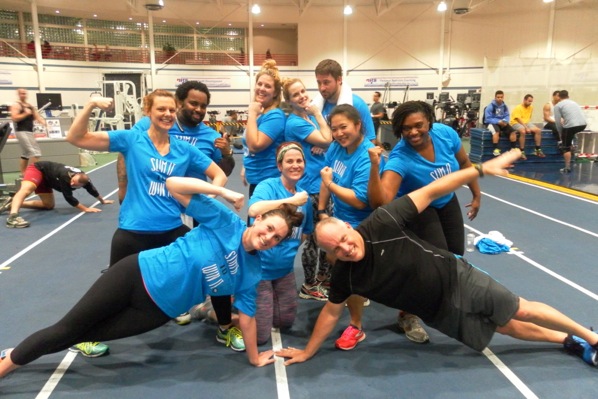 Or Haley Pratt:
Or Haley Pratt:
I was diagnosed with Wolff-Parkinson-White (WPW) Syndrome as an infant, but my structures were too small to take care of anything as a baby. I had my first ablation at age 4, which was still very young to operate, but there was no choice. I went on living life normally as an active child. The doctors told me I would never be able to play organized sports, have life insurance, or pilot a plane. I am here to say that I conquered the first two (even got a full-ride scholarship to play volleyball at Lynn University) and someday would love to get my pilot's license.
Two years ago, I did have another scare where I had a tachycardia episode that felt exactly like what I was used to growing up. I wondered how this could happen after 15 years. It ended up being inappropriate sinus tachycardia, which sometimes comes and goes on its own. I am on a beta blocker and have a looping monitor implanted for the time being, but I will be able to quit both soon. I have a healthy heart and nothing can stop me from achieving my goals!
The team’s inspirational stories are too many to list in one blog post, but I assure you that they rival the two stories shared above. It takes a lot of courage and strength to look something like that in the face and overcome it. I am so proud of Haley, Amy, and the rest of the Heart Throbs, and I am humbled that they chose me to lead them to a healthier and better life!
Five Questions About Your Eating Habits
At our first meeting, we spoke about what it took to get results in reducing body fat and body weight, or eliminating medications or staving off type 2 diabetes. I suggested that of the top three things that can lead you down the path to success—mental health, nutrition, and exercise—exercise was a distant third. Exercise should be the fun stuff; it’s the first two that are the tough ones. The Heart Throbs would like to ask you 5 questions about how you are eating that could help you develop those important habits that will lead to success:
- Are you eating slowly? It takes a minimum of 20 minutes for the brain to signal to the stomach and the rest of the body that you are full. If you eat fast, you usually eat more.
- Where are the protein-dense foods? Eating protein with every meal will help with recovery, building muscle, and feeling full. Protein consumption soon after a training session is a great habit that will help in all facets of your fitness. Some examples are meat, fish, eggs, plant protein, and yogurt.
- Are you eating veggies with every meal? Prepare them any way you like, and shoot for few portions each meal. Veggies should account for the bulk of your carbohydrate intake for the day.
- Where are the carbohydrates? Carbohydrates (grains, beans, starches, fruit) have gotten a bad rap in recent years, mainly due to the increased intake of highly processed and unnatural carbohydrate sources. Carbs are important, especially after a training session, and help supply the body with energy it needs to run various systems of the body. Portion control is key here (1 to 2 cupped-hand-sized servings), as well as timing (after training) to get the most out of your carbohydrates.
- Are you eating fat? Fat in your diet is important, and although the discussion would be too extensive for this piece, this idea does come with a bit of blowback. So let me put it like this: In the ‘70s and ‘80s, the “experts” labeled fat as the enemy and worked hard to eliminate it from the American diet (remember the SnackWell’s aisles?). What happened to America? It got fat. Choose healthy fats (oils, butter, nut butters, nuts, and seeds) and spread them out through the day.
Bonus Takeaways
The Heart Throbs have some bonus takeaways for you:
- Experiment to find what works for you. It has to work for you to be sustainable!
- Don't try to overhaul; add one habit every couple of weeks.
- Identify any nutritional deficiencies that can be found through a blood test and work to correct them.
- You can't change your life unless you change something you do every day.
This blog was written by Tony Maloney, ACSM Certified Exercise Physiologist and Fitness Center Manager. To find out more about the NIFS bloggers, click here.


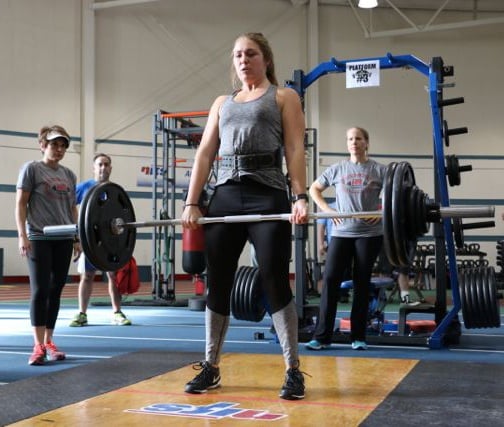 Whether you have particpated in our Powerlifting Competition or interested in joining, I’m going to give you a solid progression that will allow you to develop a strong power clean with proper technique. The following movements can be a starting point for beginners or experienced lifters looking to get a fresh perspective on their current programs.
Whether you have particpated in our Powerlifting Competition or interested in joining, I’m going to give you a solid progression that will allow you to develop a strong power clean with proper technique. The following movements can be a starting point for beginners or experienced lifters looking to get a fresh perspective on their current programs.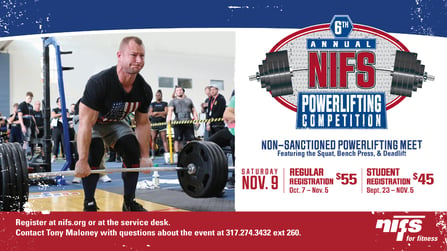
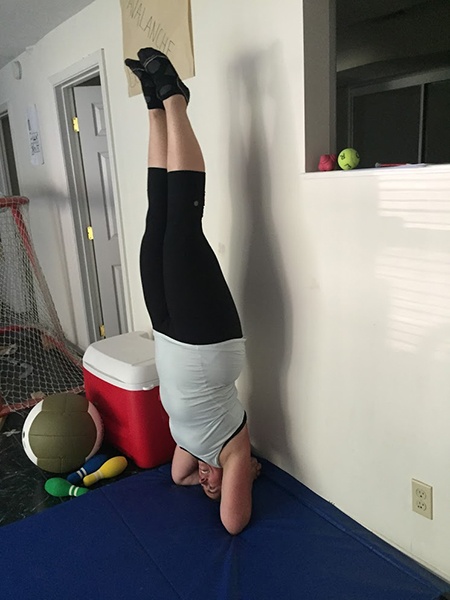 When I last left you in
When I last left you in 
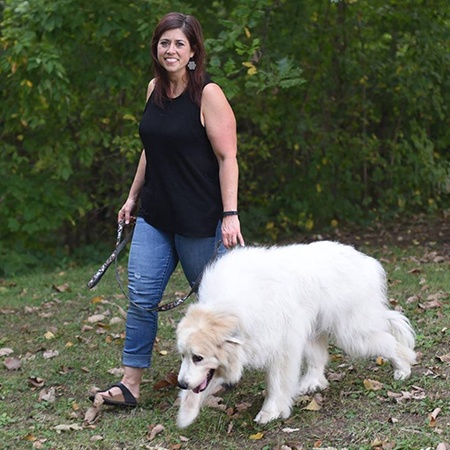

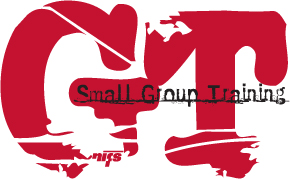
 I recently received a lesson on the origin and true meaning of the word coach. A coach can be defined as something that takes you somewhere, such as a stage coach or coach seat on an airliner. But a COACH is someone who takes you where you want to go. One of the many powers of a coach is the ability to make memories and lessons that stick with you forever, that take you places every day. I have been coached for the majority of my life before ultimately becoming one because knowing the effect these special people had on me, I wanted to be that for someone else.
I recently received a lesson on the origin and true meaning of the word coach. A coach can be defined as something that takes you somewhere, such as a stage coach or coach seat on an airliner. But a COACH is someone who takes you where you want to go. One of the many powers of a coach is the ability to make memories and lessons that stick with you forever, that take you places every day. I have been coached for the majority of my life before ultimately becoming one because knowing the effect these special people had on me, I wanted to be that for someone else.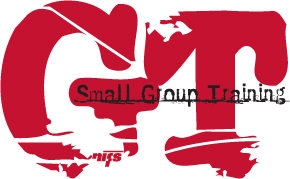
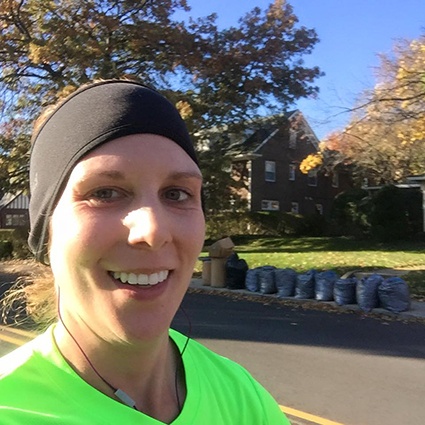 As we approach
As we approach 
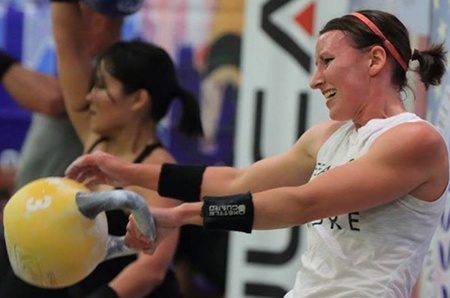 I first met Tasha three years ago when I started working at
I first met Tasha three years ago when I started working at 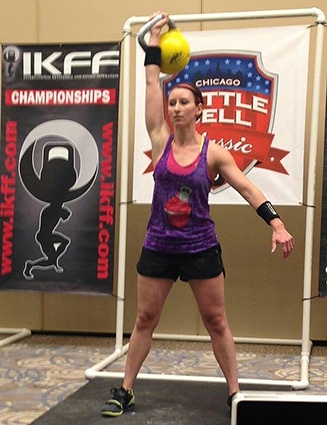 The
The 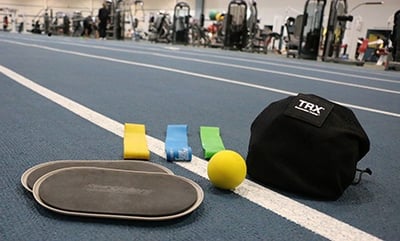
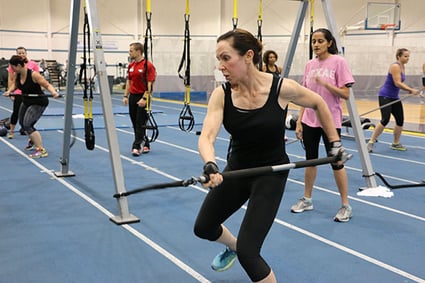 High-Intensity Interval Training
High-Intensity Interval Training
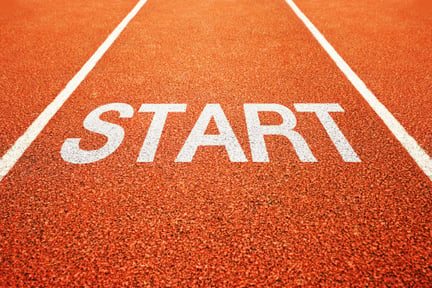 “Start somewhere today. Don’t put it off. You can do something, no matter how ‘small’ you think it is in terms of your long-term goal. Every step you take is one you’ll be thankful for when you get there. Remember: You're lapping everyone who’s still on the couch.” —
“Start somewhere today. Don’t put it off. You can do something, no matter how ‘small’ you think it is in terms of your long-term goal. Every step you take is one you’ll be thankful for when you get there. Remember: You're lapping everyone who’s still on the couch.” —
 This is a milestone year for me, so I have decided to do a workout of the day using my new age as the number of sets, reps, or length of time of the workout.
This is a milestone year for me, so I have decided to do a workout of the day using my new age as the number of sets, reps, or length of time of the workout.